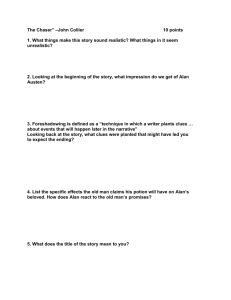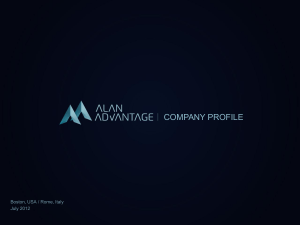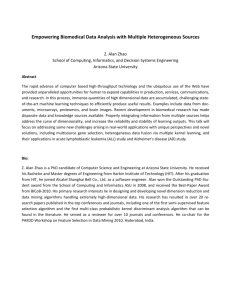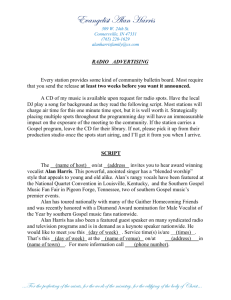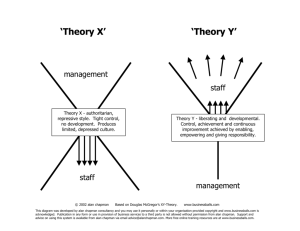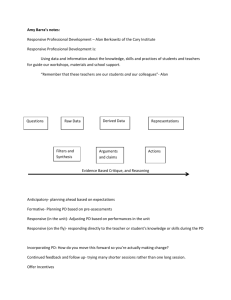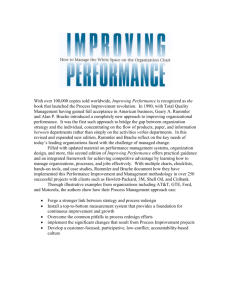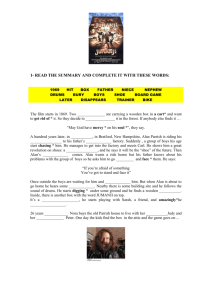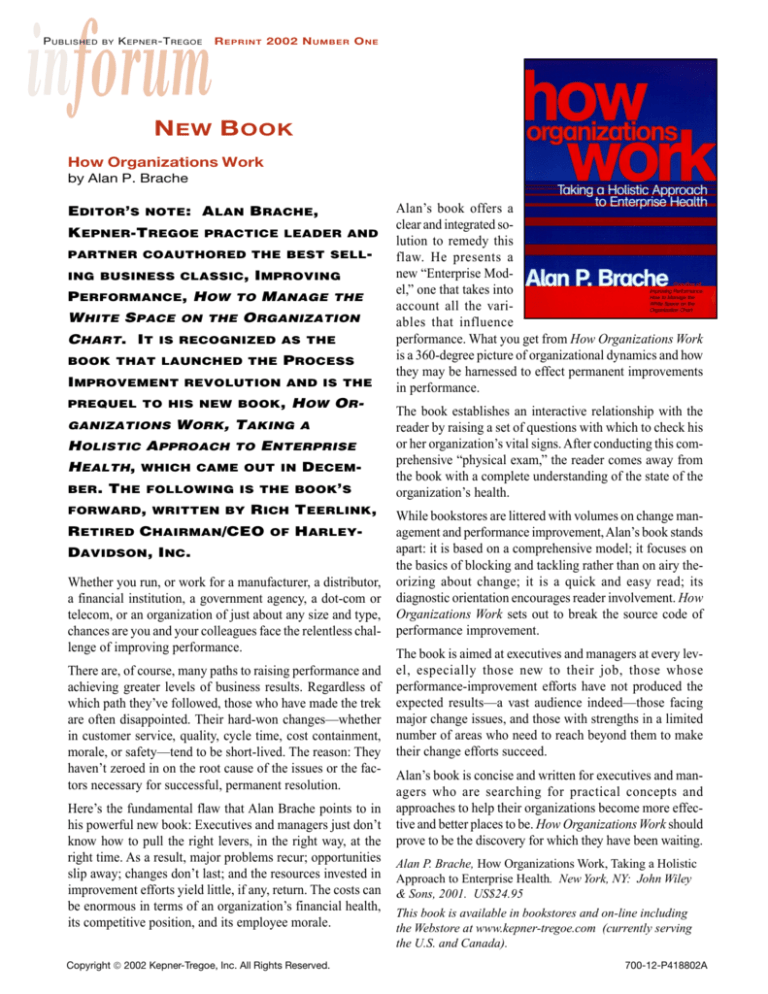
P UBLISHED
BY
K EPNER -T REGOE
R E P R I N T 2002 N U M B E R O N E
N EW B OOK
How Organizations Work
by Alan P. Brache
EDITOR’S NOTE: ALAN B RACHE,
KEPNER-T REGOE PRACTICE LEADER AND
PARTNER COAUTHORED THE BEST SELL ING BUSINESS CLASSIC,
IMPROVING
PERFORMANCE, HOW TO MANAGE THE
W HITE SPACE ON THE ORGANIZATION
CHART. IT
IS RECOGNIZED AS THE
BOOK THAT LAUNCHED THE
PROCESS
IMPROVEMENT REVOLUTION AND IS THE
PREQUEL TO HIS NEW BOOK,
GANIZATIONS
HOW OR-
WORK, TAKING A
HOLISTIC APPROACH TO ENTERPRISE
HEALTH,
BER.
WHICH CAME OUT IN
D ECEM-
THE FOLLOWING IS THE BOOK’ S
FORWARD, WRITTEN BY
RICH TEERLINK,
RETIRED CHAIRMAN/CEO OF HARLEYDAVIDSON, INC.
Whether you run, or work for a manufacturer, a distributor,
a financial institution, a government agency, a dot-com or
telecom, or an organization of just about any size and type,
chances are you and your colleagues face the relentless challenge of improving performance.
There are, of course, many paths to raising performance and
achieving greater levels of business results. Regardless of
which path they’ve followed, those who have made the trek
are often disappointed. Their hard-won changes—whether
in customer service, quality, cycle time, cost containment,
morale, or safety—tend to be short-lived. The reason: They
haven’t zeroed in on the root cause of the issues or the factors necessary for successful, permanent resolution.
Here’s the fundamental flaw that Alan Brache points to in
his powerful new book: Executives and managers just don’t
know how to pull the right levers, in the right way, at the
right time. As a result, major problems recur; opportunities
slip away; changes don’t last; and the resources invested in
improvement efforts yield little, if any, return. The costs can
be enormous in terms of an organization’s financial health,
its competitive position, and its employee morale.
Copyright 2002 Kepner-Tregoe, Inc. All Rights Reserved.
Alan’s book offers a
clear and integrated solution to remedy this
flaw. He presents a
new “Enterprise Model,” one that takes into
account all the variables that influence
performance. What you get from How Organizations Work
is a 360-degree picture of organizational dynamics and how
they may be harnessed to effect permanent improvements
in performance.
The book establishes an interactive relationship with the
reader by raising a set of questions with which to check his
or her organization’s vital signs. After conducting this comprehensive “physical exam,” the reader comes away from
the book with a complete understanding of the state of the
organization’s health.
While bookstores are littered with volumes on change management and performance improvement, Alan’s book stands
apart: it is based on a comprehensive model; it focuses on
the basics of blocking and tackling rather than on airy theorizing about change; it is a quick and easy read; its
diagnostic orientation encourages reader involvement. How
Organizations Work sets out to break the source code of
performance improvement.
The book is aimed at executives and managers at every level, especially those new to their job, those whose
performance-improvement efforts have not produced the
expected results—a vast audience indeed—those facing
major change issues, and those with strengths in a limited
number of areas who need to reach beyond them to make
their change efforts succeed.
Alan’s book is concise and written for executives and managers who are searching for practical concepts and
approaches to help their organizations become more effective and better places to be. How Organizations Work should
prove to be the discovery for which they have been waiting.
Alan P. Brache, How Organizations Work, Taking a Holistic
Approach to Enterprise Health. New York, NY: John Wiley
& Sons, 2001. US$24.95
This book is available in bookstores and on-line including
the Webstore at www.kepner-tregoe.com (currently serving
the U.S. and Canada).
700-12-P418802A

